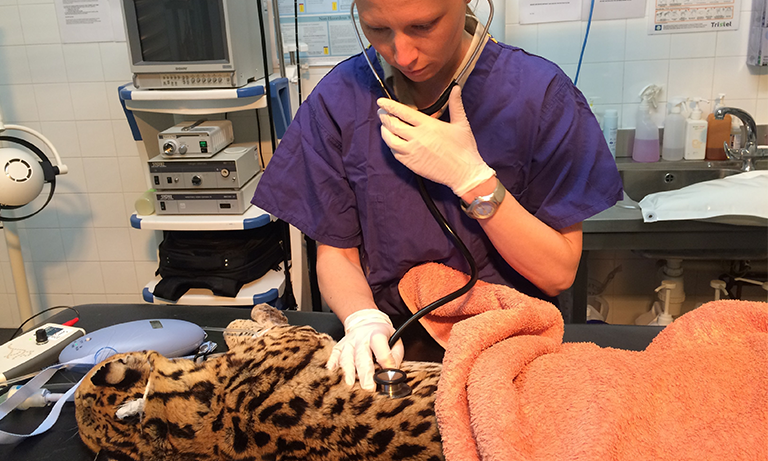Standing up for the veterinary profession
08 Aug 2024
24 Nov 2020 | Justine Shotton
For World Antimicrobial Awareness Week, BVA Junior Vice President and zoo vet Justine Shotton shares how zoo vets champion responsible medicines use despite facing some unique challenges.

Just like in domestic practice, as a zoo vet I have to be conscious of using antimicrobials responsibly when treating my patients. To some extent, my job is made easier by the fact that on the whole, our wild animals seem to be often more resilient to bacterial and some other infections, with better natural defences and an ability to sustain and heal from wounds or infections much more rapidly and with much fewer medical interventions than for their domestic counterparts. We always give our zoo animals pain relief when appropriate, but often we are much more reserved with our use of antimicrobials.
Conversely, there are some antimicrobials we have learned that we have to use prophylactically to prevent deaths during stressful times such as moulting and transportation. These include some treatments in birds susceptible to alveolate parasites including Atoxoplasma, and fungal pathogens such as Aspergillosis.
We always clinically risk assess the need for antimicrobials on a case-by-case basis. We want to ensure that the medicines we use are definitely indicated for use in that species, for that condition, whenever we possibly can. However, this is often very challenging at the zoo, since almost all of our antimicrobials have to be used off licence and often there is very limited, if any, pharmacokinetic data available in our species. We follow the cascade and known published data on efficacy and dosing to help ensure we are treating based on the best available evidence. However, it is the responsibility of the zoo veterinary profession to help extend this evidence body around antimicrobial safety and efficacy in zoo species by publishing case studies, and where possible, pharmacokinetics studies, to ensure that we can continue to ensure we are using these medicines in the most appropriate way.
Another challenge we find in the zoo context is often we are not able to perform culture and sensitivity swabs before we start treatment, unless we have anaesthetised the animal during its initial examination or treatment. One thing we have done to try to improve our understanding of antimicrobial resistance in our zoo, and to track how it changes over time, was to take part in a study with the University of Surrey. The study, due to be published in the next few months, used faecal analysis from various ungulate species and measured levels of resistant E. coli and Enterococcus spp. bacteria. We hope that the results of this study will help to inform our continued responsible stewardship of these medicines.
Something that is often underestimated in zoo and exotic animal species is compliance with medication taking. Some species are fantastic with a little bribery with their favourite treat; however, others are very crafty, and it’s not quite as easy to manually administer medications when your patient is a tiger rather than a moggy! Sometimes we have to revert to more long-acting injectable preparations, but we are cautions to use these only sparingly.
While each individual situation and patient is unique, we still strive to follow responsible medicines use recommendations despite these challenges. I believe that striving for excellence, despite the challenges of each situation we encounter clinically, will help our profession to always be mindful of the ways in which we are able to help protect our antimicrobials for the future. This will ensure we always have a useful and potent artillery of treatment options in the constant battle against pathogens, and we can continue to have effective drugs which we can use to positively improve the welfare of animals under our care.
Get tailored news in your inbox and online, plus access to our journals, resources and support services, join the BVA.
Join Us Today